Home>diy>Planning & Engineering>What Does Commercial Zoning Mean
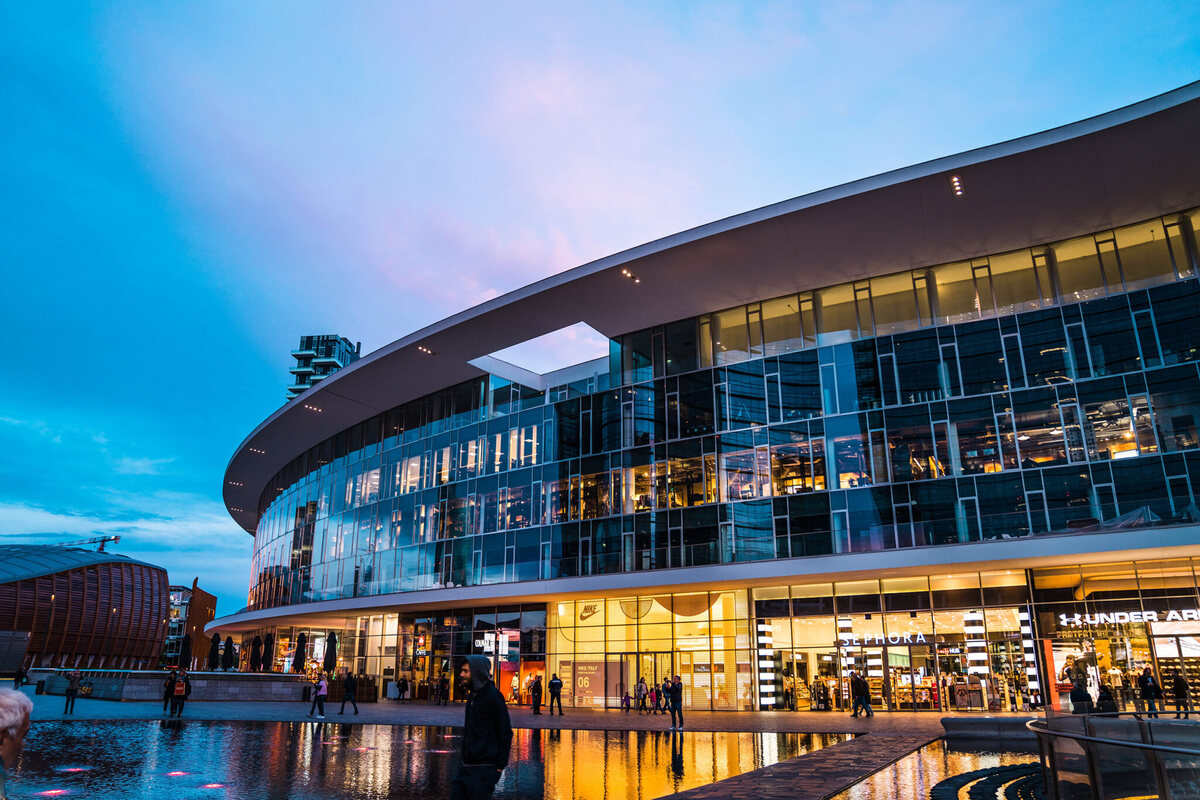

Planning & Engineering
What Does Commercial Zoning Mean
Modified: January 9, 2024
Learn the meaning of commercial zoning and how it impacts planning and engineering projects. Gain a clear understanding of this essential aspect of urban development.
(Many of the links in this article redirect to a specific reviewed product. Your purchase of these products through affiliate links helps to generate commission for Storables.com, at no extra cost. Learn more)
Introduction
Welcome to the world of commercial zoning! Whether you’re a business owner, a real estate developer, or simply curious about how land is categorized for different purposes, understanding commercial zoning is crucial. In this article, we will explore the concept of commercial zoning, its importance, regulations, and the economic impact it has on communities.
Before we dive into the details, let’s clarify what commercial zoning actually means. Commercial zoning is a land-use classification system put in place by local governments to designate specific areas for commercial activities. This zoning plan helps to ensure that properties are used in a way that maximizes economic potential, promotes orderly growth, and separates incompatible land uses.
The primary goal of commercial zoning is to create designated spaces where business activities can thrive, while also considering the needs and interests of the surrounding community. By establishing separate zones for commercial purposes, local governments can better control and manage land development, reduce conflicts between different land uses, and encourage economic development in a structured manner.
Commercial zoning plays a vital role in shaping the character and functionality of urban and suburban areas. Through zoning regulations, it helps determine where businesses, such as offices, retail stores, restaurants, and hotels, can operate. These regulations also govern the size, appearance, and use of buildings, parking requirements, and even the types of signage allowed in different commercial zones.
Without commercial zoning, cities and towns could potentially face chaotic and inefficient development patterns. Imagine a bustling restaurant located next to a quiet residential neighborhood, with noise and traffic disturbances causing constant strife for the residents. Commercial zoning helps prevent these kinds of conflicts and maintain a harmonious balance between different land uses.
As we continue on this journey, we will explore the various types of commercial zones, the regulations and restrictions imposed within these zones, as well as the benefits and drawbacks of commercial zoning. Additionally, we will delve into the economic impact of commercial zoning and discuss some challenges and controversies associated with this land-use classification system.
Now that we have set the stage, let’s jump right into the world of commercial zoning and uncover its intricacies.
Key Takeaways:
- Commercial zoning is crucial for organized development, property value protection, and economic growth. It fosters business concentration, accessibility, and job creation while preserving community character and promoting sustainability.
- Emerging trends in commercial zoning include mixed-use development, flexibility, sustainability measures, and community engagement. These trends aim to create vibrant, resilient, and inclusive commercial areas that meet the evolving needs of businesses, residents, and the environment.
Read more: What Does General Commercial Zoning Mean
Definition of Commercial Zoning
Commercial zoning is a land-use classification system employed by local governments to designate specific areas for commercial activities. It involves dividing land into distinct zones based on the types of businesses and activities permitted in each zone. The purpose of commercial zoning is to provide a framework for organized and controlled economic development, ensuring that businesses are located in appropriate areas that align with the community’s goals and needs.
Each commercial zone is characterized by a set of regulations and restrictions, which dictate what types of businesses can operate there, the permissible building sizes and heights, parking requirements, signage rules, and other considerations. These regulations aim to maintain the compatibility of land uses, preserve community character, and manage potential impacts on the surrounding environment and infrastructure.
Commercial zones are typically divided into different categories, each tailored for specific types of businesses or activities. For example, a central business district (CBD) or downtown zone may be designated for office buildings, retail shops, and entertainment venues. Industrial zones may be reserved for manufacturing facilities, warehouses, and distribution centers. Meanwhile, strip commercial zones may be designated for small businesses, such as convenience stores or restaurants, along major roads.
The specific requirements and restrictions within each commercial zone can vary significantly depending on the locality and the comprehensive zoning plan in place. Thus, it’s important for business owners and developers to closely review the zoning regulations for the intended location before making any investment or operational decisions.
Local governments and zoning authorities are responsible for creating and enforcing commercial zoning regulations. They conduct comprehensive land-use planning and adopt zoning ordinances to guide development within their jurisdiction. These regulations may be periodically reviewed and updated to respond to changing economic, social, and environmental conditions.
It’s worth noting that commercial zoning is just one aspect of a broader zoning system that includes residential, industrial, and other land-use classifications. The aim of this system is to ensure balanced and sustainable growth, promote public welfare, and safeguard property values.
In summary, commercial zoning is a classification system that designates specific areas for commercial activities, guiding the location, size, and types of businesses within a community. It serves as a framework for economic development, maintaining compatibility among land uses, and protecting the overall quality of life for residents and businesses alike.
Purpose and Importance of Commercial Zoning
Commercial zoning serves several important purposes and plays a crucial role in shaping the functionality and character of urban and suburban areas. Let’s explore the different purposes and the significance of commercial zoning:
1. Organization and Structure: One of the primary purposes of commercial zoning is to bring order and structure to land development. By designating specific areas for commercial activities, local governments can prevent haphazard development and ensure that businesses are located in appropriate zones. This separation helps to minimize conflicts between incompatible land uses and creates a more organized and efficient use of land.
2. Protecting Property Values: Commercial zoning helps to safeguard property values by creating a predictable environment for homeowners and businesses. By separating commercial areas from residential neighborhoods, zoning regulations can protect the tranquility, privacy, and aesthetic appeal of residential areas. This separation minimizes potential nuisances such as noise, traffic congestion, and pollution, thus maintaining property values and preserving the livability of residential communities.
3. Preserving Community Character: Commercial zoning ensures that the development of commercial areas aligns with the desired character and aesthetic of a community. Zoning regulations typically include guidelines on building design, landscaping, signage, and other elements that contribute to the overall appearance and identity of a locality. By controlling these aspects, commercial zoning helps maintain a consistent and attractive community character.
4. Managing Land Use Conflicts: Zoning ordinances lay out clear guidelines for the types of businesses and activities allowed in each commercial zone. This helps to prevent potential conflicts and ensure that businesses are compatible with the surrounding land uses. For example, locating heavy industrial operations far away from residential neighborhoods minimizes the negative impact on residents’ quality of life.
5. Promoting Economic Development: Commercial zoning plays a vital role in fostering economic growth. By designating specific areas for commercial activities, zoning authorities can facilitate the concentration of businesses and create a conducive environment for commerce. This concentration allows businesses to benefit from location advantages, such as proximity to customers and suppliers, public transportation, and other necessary amenities.
6. Providing for Infrastructure Planning: Commercial zoning also aids in infrastructure planning and development. By designating areas for commercial activities, local governments can anticipate and provide the necessary infrastructure, including roads, utilities, parking facilities, and public transportation, to support business growth. This proactive planning helps manage the impact on infrastructure and ensures that businesses have the necessary resources to thrive.
7. Enhancing Community Safety and Well-being: Commercial zoning regulations often include provisions for safety standards, such as building codes, fire regulations, and environmental protections. These measures help maintain a safe and healthy environment for both businesses and residents. Additionally, commercial zoning can also encourage the inclusion of amenities like parks, sidewalks, and green spaces, which contribute to the overall well-being and quality of life in a community.
Overall, commercial zoning serves a crucial role in promoting organized and sustainable economic development, protecting property values, preserving community character, managing land use conflicts, supporting infrastructure planning, and enhancing the safety and well-being of communities. Understanding and adhering to commercial zoning regulations is essential for both business owners and local governments to create vibrant and harmonious urban and suburban environments.
Types of Commercial Zones
Commercial zoning encompasses a variety of different zone classifications, each tailored to accommodate specific types of commercial activities and land uses. Let’s explore some of the most common types of commercial zones:
- Central Business District (CBD): The CBD is the heart of a city or town and is typically characterized by high-density development. It serves as a vibrant hub for commerce, office buildings, retail stores, restaurants, and entertainment venues. The CBD is often designed to be pedestrian-friendly, with walkable streets, public transportation, and a mix of commercial and residential uses.
- Retail Zone: Retail zones are specifically designated for retail businesses, including shopping centers, malls, and standalone stores. These zones cater to the needs of consumers, providing a wide range of products and services for sale. Retail zones often have specific regulations regarding building size, parking requirements, signage, and hours of operation.
- Industrial Zone: Industrial zones are intended for manufacturing, warehouse, distribution, and other industrial activities. These zones are usually located away from residential areas due to noise, traffic, and environmental impacts. Industrial zoning regulations may include restrictions on building height, noise levels, waste management, and emissions control.
- Office/Commercial Zone: Office/commercial zones are dedicated to office-based businesses and professional services. These zones accommodate office buildings, professional offices, business parks, and co-working spaces. Regulations in office/commercial zones may focus on building size, parking requirements, landscaping, and the provision of public amenities.
- Mixed-Use Zone: Mixed-use zones combine multiple land uses within the same area, encouraging a blend of commercial, residential, and sometimes even recreational activities. These zones promote walkability and create inclusive communities where people can live, work, and play in close proximity.
- Special Purpose Zone: Special purpose zones are designated for specific types of commercial activities that require specialized infrastructure or serve unique purposes. These may include zones for hospitals, hotels, airports, educational institutions, research facilities, and agricultural or horticultural operations. Special purpose zones often have specific regulations pertaining to their designated activities.
It’s important to note that the specific types of commercial zones can vary from one locality to another. Zoning regulations for each zone may also differ, considering factors such as the size of the area, population density, and the goals and visions of the local government.
Understanding the different types of commercial zones is essential for business owners, developers, and investors who aim to establish or expand their commercial operations. Consulting with local zoning authorities and reviewing the zoning ordinances for the intended location is crucial to ensure compliance and maximize the potential of the business venture.
Regulations and Restrictions in Commercial Zones
Commercial zones are governed by specific regulations and restrictions imposed by local governments to ensure orderly development, protect the interests of the community, and maintain a harmonious balance between different land uses. Let’s explore some of the common regulations and restrictions you may find in commercial zones:
- Permitted Uses: Zoning regulations specify the types of businesses and activities that are allowed within each commercial zone. These regulations may include a comprehensive list of permitted uses, such as retail stores, restaurants, offices, banks, and service establishments.
- Prohibited Uses: Commercial zoning also identifies specific activities that are not permitted within a particular zone. These may include more intensive or incompatible land uses, such as heavy manufacturing, hazardous material storage, or adult entertainment establishments.
- Building Codes and Design Guidelines: Commercial zones often have building codes and design guidelines to ensure that structures meet safety standards, blend well with the surrounding area, and contribute to the overall aesthetic appeal of the community. These guidelines may specify building height and setback requirements, architectural styles, exterior signage regulations, and landscaping provisions.
- Parking Requirements: Zoning regulations typically include parking requirements to ensure adequate parking spaces for businesses and customers. These requirements may vary depending on the type of business and the size of the commercial establishment.
- Signage Restrictions: Zoning regulations often govern the size, type, and placement of signs for businesses within commercial zones. These restrictions help maintain visual aesthetics, prevent sign clutter, and minimize potential distractions or safety hazards.
- Hours of Operation: Some commercial zones may have restrictions on the hours of operation for businesses, particularly for those located near residential areas. These restrictions aim to minimize noise and disturbance during late hours, ensuring a peaceful environment for residents.
- Environmental Considerations: Commercial zoning may impose environmental requirements to protect air and water quality, preserve natural resources, and manage waste disposal. These regulations may include guidelines for noise control, water runoff management, energy efficiency, and sustainable development practices.
- Landscaping and Open Space: Zoning regulations often include landscaping requirements to enhance the visual appeal of commercial areas and create a pleasant environment. These requirements may specify the amount of green space, tree planting, and other landscaping elements to soften the impact of buildings and promote aesthetics.
- Impact Assessments: In some cases, commercial developments may require impact assessments to evaluate the potential effects on traffic, utilities, and other infrastructure. These assessments ensure that the necessary infrastructure improvements are made to accommodate the increased demands resulting from the commercial activities.
It’s important for business owners, developers, and investors to understand and adhere to these regulations and restrictions when planning and operating within commercial zones. Failure to comply with zoning regulations can result in fines, legal issues, or the need to make costly modifications to bring properties into compliance.
It’s advisable to consult with local zoning authorities and review the specific zoning ordinances for the intended location to ensure full compliance and a smooth operation within the commercial zone.
Read more: What Does Agricultural Zoning Mean
Benefits and Drawbacks of Commercial Zoning
Commercial zoning, as a land-use classification system, offers several benefits and advantages for both communities and businesses. However, it also comes with certain drawbacks. Let’s explore the benefits and drawbacks of commercial zoning:
Benefits:
- Orderly Development: Commercial zoning provides a framework for organized and predictable development. By designating specific areas for commercial activities, it helps prevent haphazard development, creates a clear division between different land uses, and promotes orderly growth within a community.
- Compatibility: Zoning regulations ensure that businesses are located in areas that are compatible with their operations and minimize conflicts with other land uses. This separation helps prevent issues such as noise disturbances, traffic congestion, and environmental impacts, fostering a harmonious coexistence between businesses and residents.
- Promotes Economic Growth: Commercial zoning plays a crucial role in fostering economic development. By concentrating commercial activities in designated areas, it creates an environment that supports business growth, enhances the overall economic vitality of a community, and encourages investment and job creation.
- Predictability: Zoning regulations provide clarity and predictability for business owners, developers, and investors. By knowing the permitted uses, building requirements, and other regulations within a commercial zone, stakeholders can better plan for their operations and make informed decisions about their investments.
- Safeguards Property Values: Commercial zoning protects property values by ensuring that incompatible uses are kept separate. By separating residential areas from commercial zones, it can help maintain the tranquility, privacy, and aesthetic appeal of residential neighborhoods, which in turn protects property values.
- Community Character: Commercial zoning regulations often include design guidelines and restrictions to preserve and enhance the character and aesthetics of a community. By ensuring that new commercial developments align with the desired character and architecture, commercial zoning contributes to a cohesive and attractive community environment.
Drawbacks:
- Restrictions on Land Use: The strict regulations and restrictions of commercial zoning may limit the flexibility and adaptability of businesses. Some businesses may find it challenging to operate within the confines of specific zoning requirements, particularly if they do not fit neatly into the permitted uses of a particular zone.
- Higher Costs: Meeting the requirements set forth by zoning regulations can often result in higher costs for businesses. For example, the need to provide sufficient parking spaces or comply with specific design guidelines can add expenses to development projects.
- Reduced Flexibility: Commercial zoning can limit the ability of businesses to respond to changing market conditions or evolving business models. The rigid nature of zoning regulations may restrict the adaptation of businesses to new trends or emerging technologies, potentially hindering innovation and growth.
- Potential for Exclusion: In some cases, commercial zoning regulations may unintentionally exclude certain businesses, particularly smaller or startup enterprises, which may not have the resources to meet the specific requirements or compete for spaces within highly regulated zones. This can create inequities and limit the diversity of businesses within a community.
- Underutilization of Space: Commercial zoning could lead to the underutilization of land, especially if certain zones remain vacant or businesses are unable to occupy them due to restrictive regulations. This can hinder the optimal use of available space and may result in missed economic opportunities.
While commercial zoning brings numerous benefits, it is important to carefully balance the advantages with the potential drawbacks. Local governments should regularly review and update zoning regulations to ensure they align with the changing needs and dynamics of communities, striking a balance between flexibility for businesses and the protection of community interests.
Economic Impact of Commercial Zoning
Commercial zoning has a significant economic impact on communities, shaping the growth, vitality, and prosperity of local economies. Let’s explore the various ways in which commercial zoning influences the economic landscape:
Read more: What Does Zoning R Mean
Promotes Business Concentration:
By designating specific areas for commercial activities, commercial zoning encourages the concentration of businesses in centralized locations. This clustering effect creates economic hubs, such as downtown areas or shopping districts, where businesses can benefit from proximity to customers, suppliers, and other complementary businesses. This concentration fosters competition, innovation, and economies of scale, leading to increased consumer choices and improved overall business performance.
Enhances Accessibility and Convenience:
Commercial zoning ensures that businesses are located in easily accessible areas, served by transportation networks and infrastructure. This accessibility attracts customers, employees, and visitors, contributing to increased foot traffic and economic activity in the surrounding area. Convenient access to commercial establishments stimulates spending, generates employment opportunities, and drives economic growth.
Generates Employment Opportunities:
Commercial zoning creates a range of employment opportunities by providing locations for businesses to operate. From retail stores and restaurants to offices and service establishments, commercial zones host a diverse array of businesses that require a workforce to support their operations. The employment opportunities generated by these businesses contribute to the local economy, providing income and boosting consumer spending power.
Boosts Property Values:
Commercial zoning plays a role in supporting property values, particularly for properties located near commercial zones. The presence of well-planned and vibrant commercial areas can enhance the desirability of surrounding residential and commercial properties, driving up property values. This can result in increased tax revenue for local governments and stimulate further economic investment in the community.
Read more: What Does RM Zoning Mean
Yields Tax Revenue:
Commercial zoning contributes to the tax base of a community through property taxes, sales taxes, and other forms of commercial taxation. The economic activity generated within commercial zones, including sales transactions and business income, generates tax revenue that can be used to fund public services, infrastructure development, and community programs.
Supports Ancillary Industries:
Commercial zoning not only benefits businesses directly involved in commercial activities but also supports ancillary industries. This includes industries that provide goods and services to support commercial operations, such as construction, transportation, warehousing, advertising, and professional services. The presence of a vibrant commercial sector stimulates demand for these supporting industries, leading to job creation and economic growth.
Encourages Economic Diversification:
The availability of different types of commercial zones allows for economic diversification within a community. Communities with a mix of retail, office, industrial, and other commercial zones are better able to weather economic downturns by having a diverse economic base. This diversification helps reduce dependency on a single industry or sector, making the local economy more resilient and adaptable to changing market conditions.
In summary, commercial zoning has a profound impact on the economic well-being of communities. By promoting business concentration, enhancing accessibility and convenience, generating employment opportunities, boosting property values, yielding tax revenue, supporting ancillary industries, and encouraging economic diversification, commercial zoning contributes to the growth and prosperity of local economies. Local governments must carefully plan and regulate commercial zones to strike a balance between economic development and the overall welfare of the community.
Challenges and Controversies in Commercial Zoning
While commercial zoning serves as a vital tool for managing land development and promoting economic growth, it is not without its challenges and controversies. Let’s explore some of the common issues associated with commercial zoning:
Read more: What Does C-2 Zoning Mean
1. Zoning Conflicts:
Conflicts can arise when there is a mismatch between the desired land uses and the zoning regulations. Business owners and developers may face challenges if they have innovative or unconventional business models that do not fit neatly within existing zoning categories. This can lead to disagreements between stakeholders and regulatory authorities, requiring careful consideration and potential modifications to zoning ordinances.
2. Inflexibility:
Commercial zoning regulations can sometimes be inflexible and difficult to adapt to changing market conditions and emerging business trends. This inflexibility may restrict entrepreneurial activities and hinder the ability of businesses to respond to evolving consumer preferences and technological advancements. Striking a balance between regulatory control and flexibility is crucial to ensure the long-term sustainability and competitiveness of commercial developments.
3. Exclusionary Practices:
Commercial zoning regulations can unintentionally exclude certain businesses or limit the entry of smaller or independent enterprises. The restrictive nature of some zoning requirements, such as minimum lot sizes or expensive infrastructure obligations, can make it challenging for small businesses with limited resources to access certain commercial areas. This can result in the dominance of larger corporations and limit the diversity of businesses within a community.
4. Gentrification and Displacement:
Commercial zoning can contribute to gentrification, which is the process of revitalizing urban areas by attracting wealthier residents and businesses, often resulting in the displacement of lower-income communities. As commercial developments flourish, property values may rise, making it difficult for existing residents or small businesses to afford the increased costs of living or operating in the area. Balancing economic development with measures to mitigate the social and economic impacts of gentrification is crucial for maintaining the socioeconomic diversity and inclusiveness of communities.
Read more: What Does R40 Zoning Mean
5. Environmental Impact:
Commercial zoning can have environmental consequences, such as increased traffic congestion, pollution, and strain on natural resources. The concentration of commercial activities in specific areas can lead to increased vehicle emissions and the depletion of water resources. Moreover, the construction of commercial buildings and infrastructure may encroach upon natural habitats or disturb ecosystems. Incorporating sustainable development practices and ensuring proper environmental impact assessments can help mitigate these concerns.
6. Community Engagement:
The planning and implementation of commercial zoning can sometimes neglect community engagement and input. Lack of meaningful community involvement may lead to a disconnect between the aspirations of the community and the decisions made by zoning authorities. Ensuring transparent and participatory planning processes can help build trust, facilitate dialogue, and achieve zoning outcomes that align with the needs and aspirations of the community.
7. Infrastructure Strain:
Concentrated commercial developments can place strain on existing infrastructure, such as roads, utilities, and public transportation. Increased demand for services and facilities may require significant investments in infrastructure to support the needs of a growing commercial sector. Integration of infrastructure planning into the commercial zoning process is vital to avoid overburdened systems and ensure that developments are adequately supported by the necessary infrastructure.
Addressing these challenges and controversies requires effective communication, collaboration, and a forward-thinking approach to commercial zoning. Striking a balance between the interests of businesses, communities, and the environment is key to creating sustainable and inclusive commercial zones that contribute to the overall well-being of a locality.
Future Trends in Commercial Zoning
As communities evolve and respond to changing societal, economic, and environmental trends, commercial zoning is also adapting to meet the needs of the future. Here are some emerging trends in commercial zoning:
Read more: What Does R20 Zoning Mean
1. Mixed-Use Development:
There is a growing preference for mixed-use development, which combines different land uses within the same area. Mixed-use zoning allows for a blend of commercial, residential, and sometimes even recreational or cultural activities. This promotes walkability, reduces dependence on private vehicles, and creates vibrant, inclusive, and sustainable communities.
2. Flexibility and Adaptive Reuse:
Flexibility is becoming a key aspect of commercial zoning. Zoning regulations are being revised to permit adaptive reuse of buildings and allow for a variety of uses and activities. This trend encourages the revitalization of existing spaces, promotes creativity and innovation, and reduces the environmental impact of new construction.
3. Sustainability and Green Design:
There is a growing emphasis on integrating sustainability and green design principles into commercial zoning. Zoning ordinances are including requirements and incentives for energy-efficient buildings, renewable energy installations, stormwater management, green spaces, and other environmentally friendly practices. This trend aims to minimize the environmental footprint of commercial developments and foster more sustainable and resilient communities.
4. Transit-Oriented Development:
Transit-oriented development (TOD) is gaining prominence as a way to reduce congestion, promote accessibility, and enhance livability. Commercial zoning is being aligned with transportation planning to encourage commercial developments near public transportation hubs. This approach aims to increase transit ridership, reduce dependency on private vehicles, and create vibrant, pedestrian-friendly commercial areas.
Read more: What Does R30 Zoning Mean
5. Smart Growth and Innovation Districts:
Smart growth and innovation districts seek to create highly connected, technologically advanced, and inclusive commercial areas. These districts integrate technology, data-driven decision-making, and advanced infrastructure to support innovation, entrepreneurship, and economic growth. They often prioritize mixed-use development, walkability, smart transportation systems, and a vibrant ecosystem for startups and creative industries.
6. Inclusionary Zoning:
Inclusionary zoning is being implemented to address housing affordability issues and promote economic diversity within commercial zones. This trend requires developers to include affordable housing units or contribute to affordable housing funds as part of their commercial projects. Inclusionary zoning aims to create opportunities for lower-income residents and workers to live in proximity to commercial centers.
7. Community Engagement and Participatory Zoning:
Increasingly, communities are demanding greater involvement in the zoning process. Participatory zoning approaches are being introduced to ensure that the aspirations and needs of communities are incorporated into commercial development plans. This trend recognizes the importance of community engagement, transparency, and collaborative decision-making in shaping the future of commercial zoning.
The future of commercial zoning is characterized by a shift towards more sustainable and inclusive practices, greater flexibility, the integration of technology and innovation, and a stronger emphasis on community engagement. These trends seek to create vibrant, resilient, and well-connected commercial areas that meet the evolving needs of businesses, residents, and the environment.
Conclusion
Commercial zoning plays a vital role in shaping our communities and supporting economic growth. By designating specific areas for commercial activities, zoning authorities can foster organized development, promote compatibility between land uses, and enhance the overall quality of life for residents and businesses alike.
Throughout this article, we have explored the definition of commercial zoning, its purpose, and the importance it holds in our urban and suburban environments. We have delved into the various types of commercial zones, the regulations and restrictions within these zones, and the benefits and drawbacks of commercial zoning.
Commercial zoning provides numerous advantages, including orderly development, community character preservation, property value protection, and economic growth stimulation. It promotes business concentration, accessibility, and job creation, while also yielding tax revenue for local governments. Nevertheless, commercial zoning also faces challenges and controversies, such as zoning conflicts, inflexibility, and potential exclusionary practices.
Looking ahead, we see emerging trends in commercial zoning, including mixed-use development, flexibility and adaptive reuse, sustainability measures, transit-oriented development, smart growth, inclusionary zoning, and participatory zoning. These trends aim to create more sustainable, resilient, inclusive, and community-driven commercial areas.
Ultimately, commercial zoning should strike a balance between facilitating economic growth and preserving the interests of the surrounding community. Regular review and updates of zoning regulations, community engagement, and thoughtful planning are essential in creating vibrant and harmonious commercial zones that contribute to the long-term well-being of our cities and towns.
As the landscape continues to evolve, it is crucial for businesses, developers, and local governments to stay informed about the evolving practices and regulations in commercial zoning. By understanding and navigating the complexities of commercial zoning, we can create prosperous and livable communities that cater to the needs of businesses and residents alike.
In conclusion, commercial zoning is a powerful tool in shaping the character, functionality, and economic vitality of our communities. It is through thoughtful, adaptive, and inclusive commercial zoning practices that we can create dynamic, sustainable, and thriving places for the present and the future.
Frequently Asked Questions about What Does Commercial Zoning Mean
Was this page helpful?
At Storables.com, we guarantee accurate and reliable information. Our content, validated by Expert Board Contributors, is crafted following stringent Editorial Policies. We're committed to providing you with well-researched, expert-backed insights for all your informational needs.

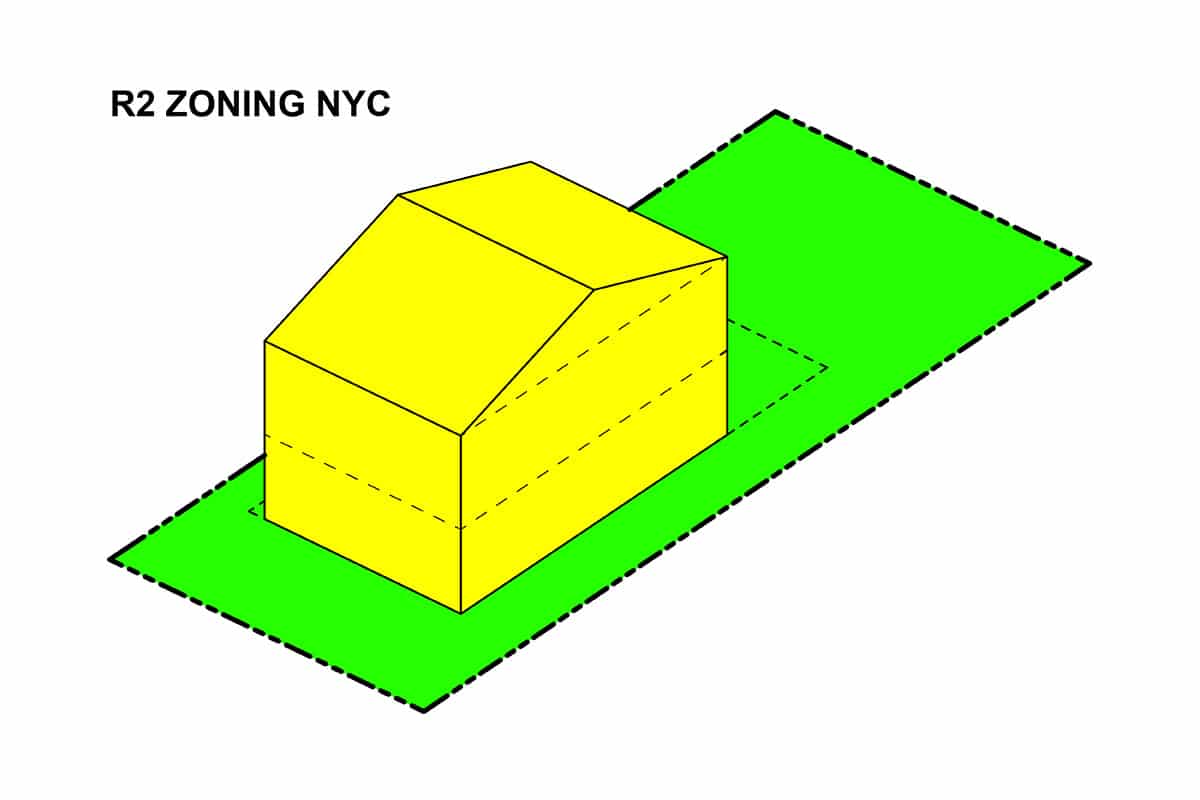

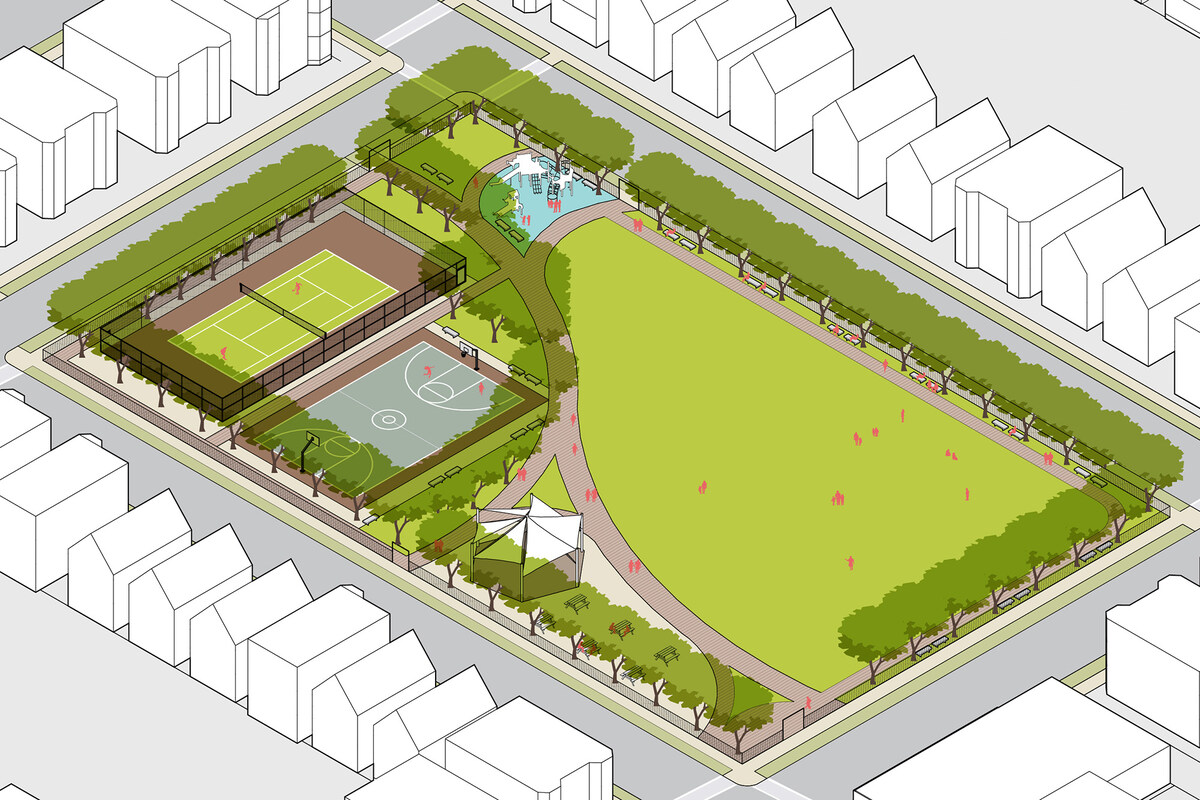
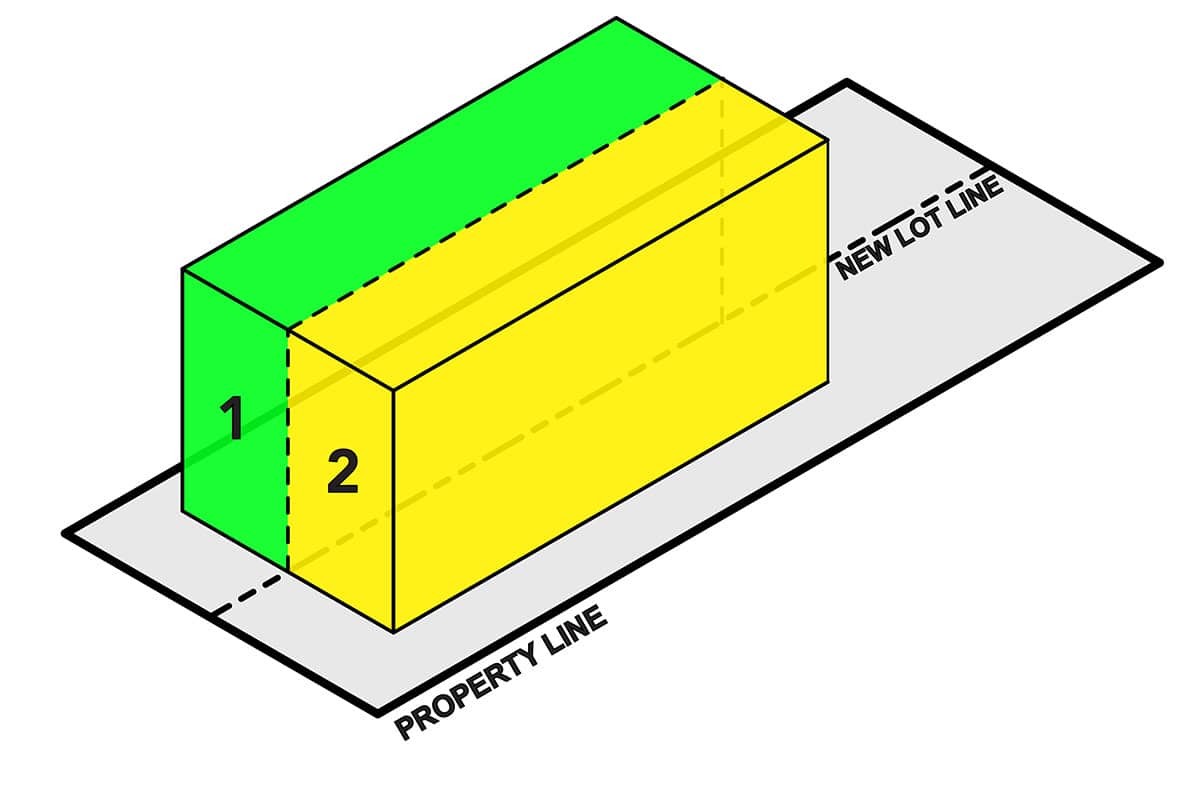
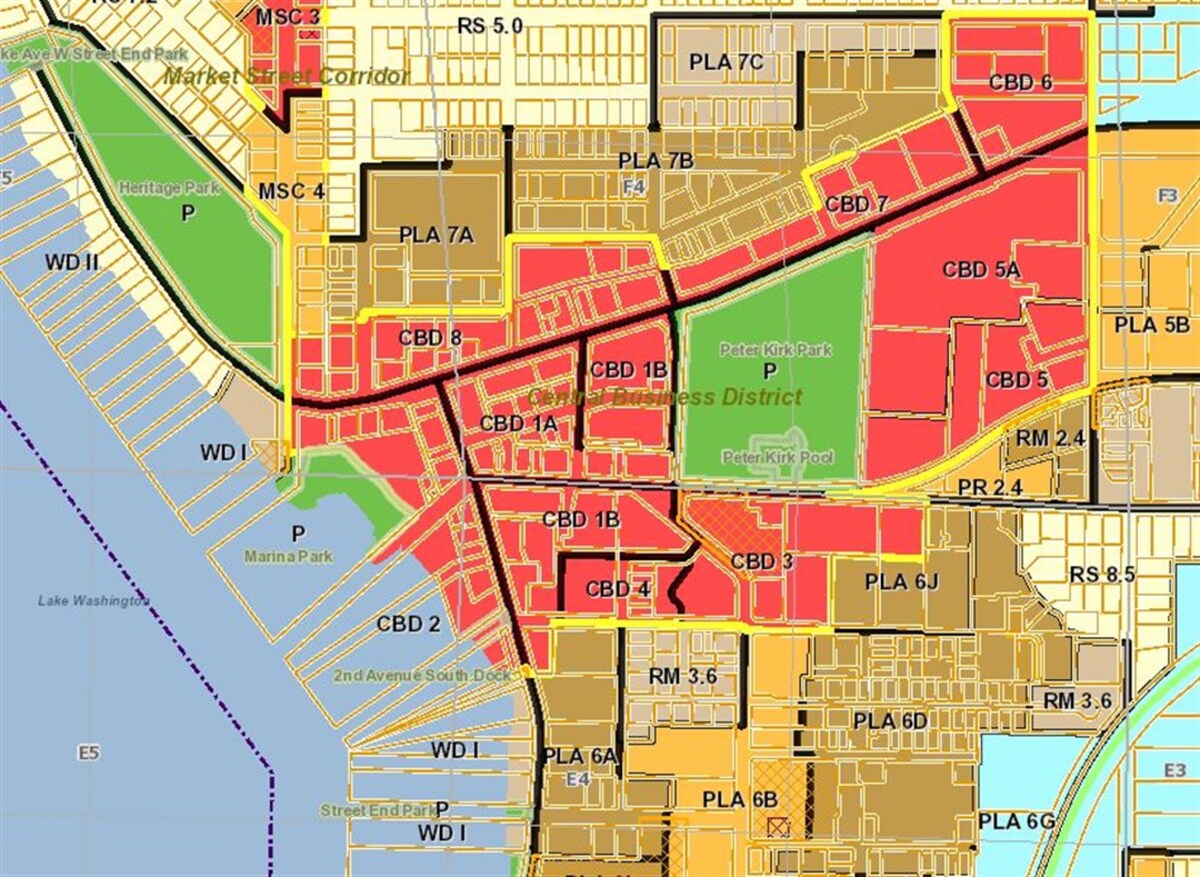



0 thoughts on “What Does Commercial Zoning Mean”